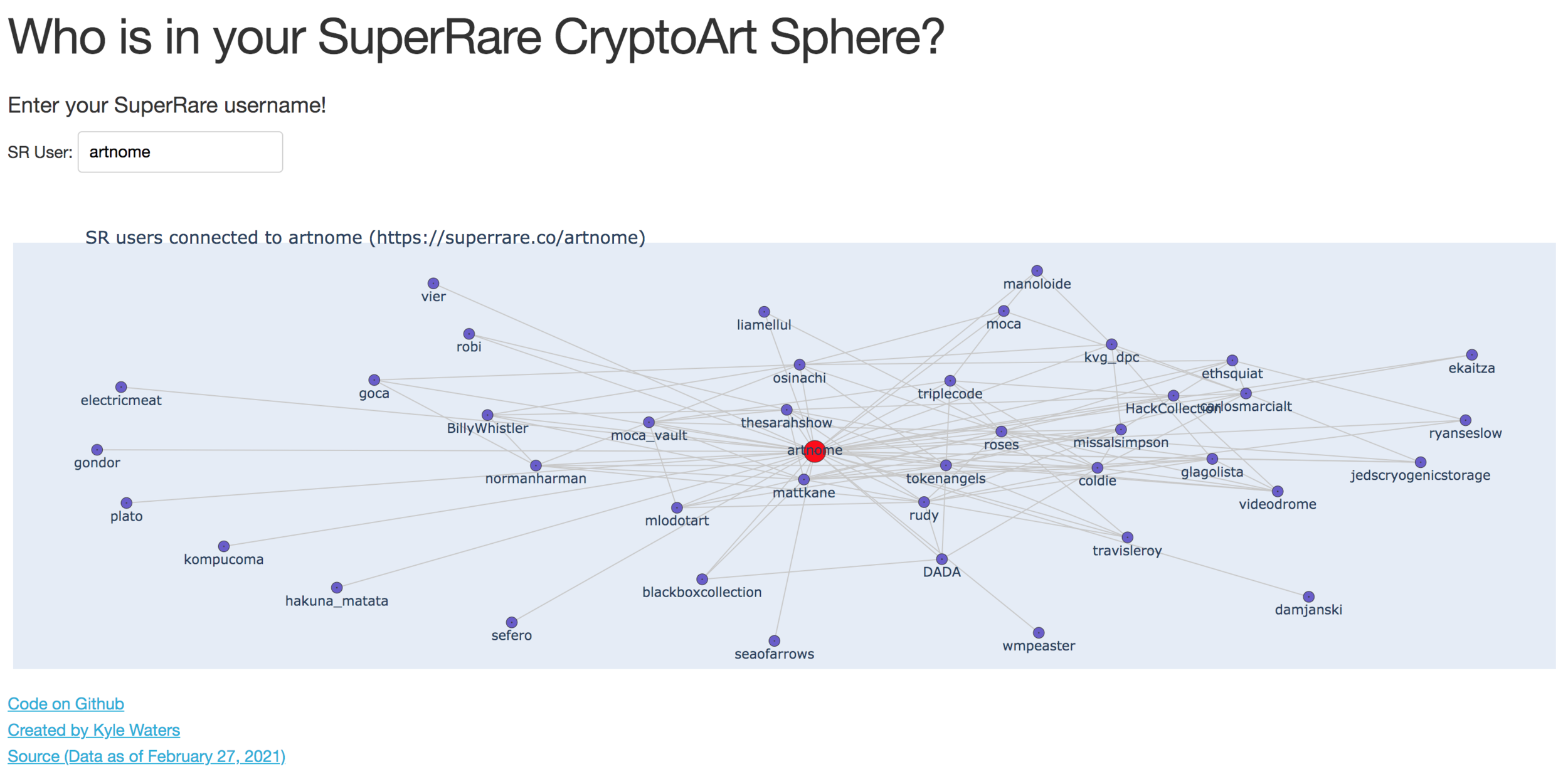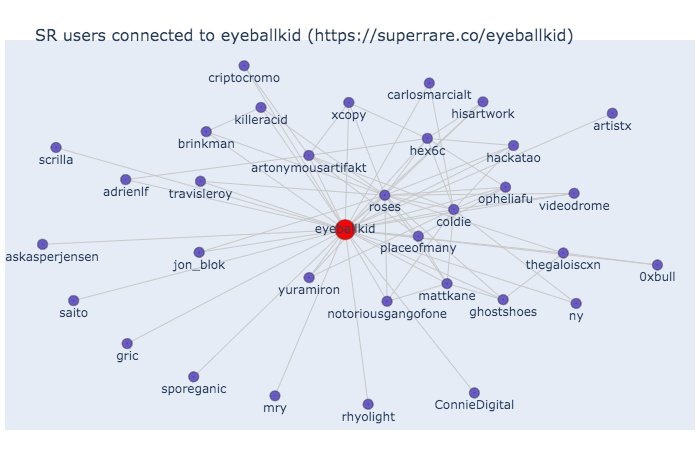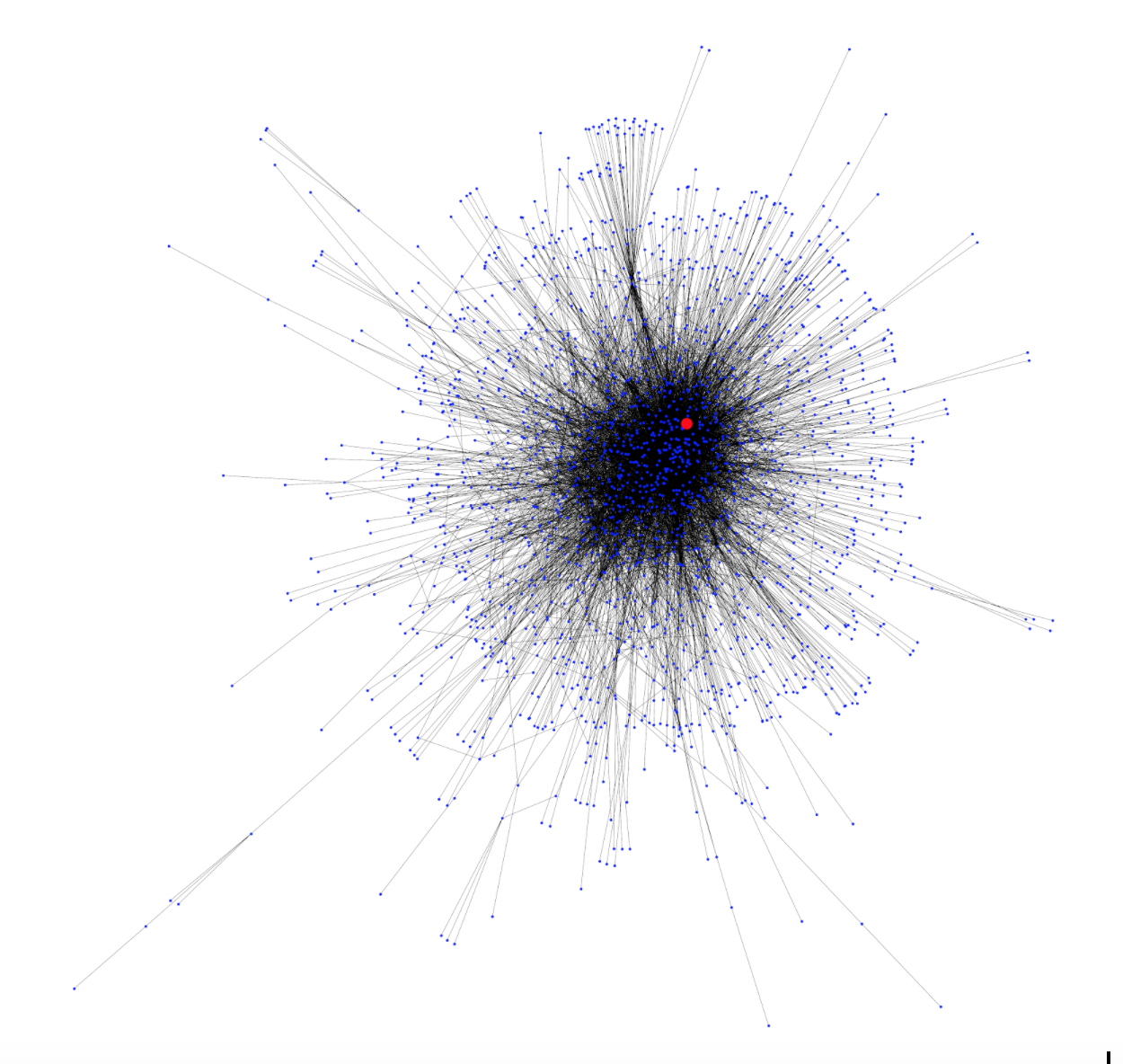It’s weird to see the whole world going crazy over NFTs four years after I announced the blockchain art market is here. It feels like someone crawled into my head, recorded my dreams, and they are now being broadcast out on every mainstream media channel.
One cool way to try to make sense of this explosion in popularity is to use data and data visualization to understand just what happened and who is connected to who. Artnome data scientist Kyle Waters did just that by creating an interactive version of what is known colloquially as an “ego graph” showing who is connected to who on the popular NFT platform SuperRare.
The tool is super easy (pun intended) to use though you need to be patient as it can take a few seconds to load. Anyone can type in the name of an artist or collector as it appears on SuperRare and see who is in that artist or collector’s network.
Interestingly, some of the top artists by total sales have the smallest networks. This suggests a small number of whales (collectors with a lot of money) have become market makers for them. This is a common practice in the traditional art market, as well, with power collectors like the Mugrabi family who are said to own 1,000 works by Andy Warhol.
Pak’s SuperRare Social Graph
Another practice that comes over from the traditional art world is a desire by whales to retain privacy and anonymity. Artist Pak leads all artists on SuperRare for total dollar value in sales at $1,055,075, and has an ASP on the secondary market of $84K. His collectors’ desire for privacy can be seen in the mysterious names in Pak’s network, like N/A or Anonymous, Not in use, or other usernames such as evault, motokovault, thevault, and randaartvault that imply the works are being stored in something like a digital freeport. It makes sense that the relatively small number of collectors supporting him would prefer to remain anonymous to avoid being hacked.
Missalsimpson’s SuperRare Social Graph
By comparison, other more-prolific artists have built an incredibly broad and decentralized following by offering a larger number of works at a more affordable price. For example, the artist behind the username Miss al Simpson has created 275 works and is well connected to a large number of collectors. While she may not have a small number of wealthy collectors in control of her market, the sheer number of collectors means there is a true market for her work with many people already invested and interested in adding to their existing collections.
Eyeball Kid AKA Jonathan Perkins, Cofounder and Chief Product Officer of SuperRare
Another fun thing to look at is the social graphs for the SuperRare team, who are also all collectors. Eyeball Kid (Johnathan Perkins) is the co-founder and chief product officer. We can see from Jonathan’s graph that he has been rather selective and generally has a preference for the artists that were early to the platform.
Zach Yanger (Roses)
By comparison, Zach Yanger, chief marketing officer for SuperRare, has really spread the love and has one of the most complex social graphs I came across. Part of that may also be because he has been active as an artist in addition to collecting.
I wanted to learn more about this ego graph, so I asked Kyle Waters what compelled him to visualize the data in this way and to build this innovative tool.
When you buy a work from an artist you are building a connection between yourself and that artist. Traditionally this has been an opaque network without a structured social layer. In this opaque network, it’s difficult to discover other collectors who support the artists you do. It’s difficult to show others the curated network of artist-collector connections you’ve formed through your interests, likes, and personality.
The SuperRare CryptoArt marketplace is a social network self-described as “Instagram meets Christie’s”. Why is this a good thing for the future of the art market and the artist-collector relationship? Because Metcalfe’s Law tells us that the more people in a network, the more useful it becomes.
Kyle also dug into my personal ego graph on SuperRare.
Artnome’s SuperRare Social Graph
Although I was the first collector, I was mostly active in the early days, and my graph reflects that. However, Kyle points out that if you step out just 6 degrees, my network encompasses just about everyone, which makes sense given how early I started.
Six Degrees of Artnome
We hope you enjoy playing around with the graph. As always, if you have suggestions or feedback, leave them in the comments or email me at jason@artnome.com and I will pass them along to Kyle. Cheers and get working on expanding your network so you can build a more interesting ego graph ;-)








